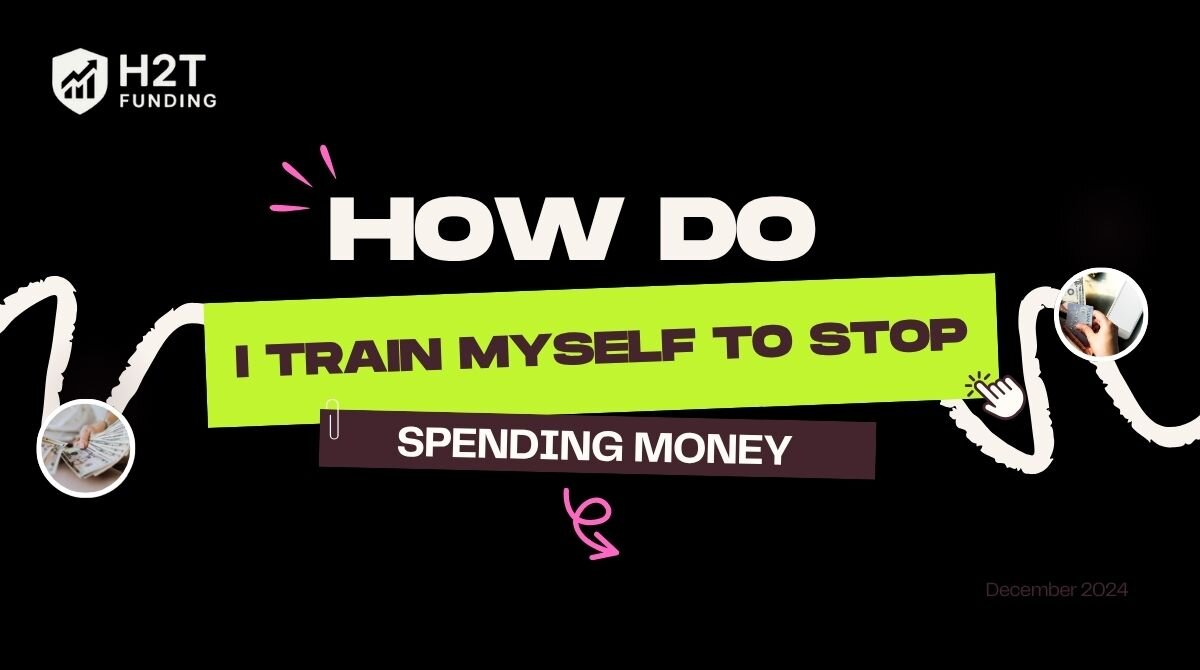I still remember the moment that changed everything: I was staring at my credit card statement and saw a single month’s worth of purchases equaling two months of salary, on items I barely even remembered buying.
It was a wake‑up call. I realized that stopping overspending isn’t just about saving money; it’s a process of training yourself to break habits from the root. Many people struggle with impulsive spending, emotional triggers, or keeping up appearances, and there’s no shame in that.
So, how do I train myself to stop spending money? In this guide, I’ll walk you through 18 effective strategies that helped me break free from the cycle. These aren’t quick fixes; they’re habits that worked for me and countless others to regain control and build financial freedom. Let’s begin this transformation together.
Key Takeaways
- Identify emotional and situational triggers behind your spending to break habits from the root, not just the surface behavior.
- Use simple, flexible budgeting frameworks like the 50/30/20 rule to give your money a clear direction without overwhelming complexity.
- Implement tactical habits such as shopping with a list, using the 24-hour pause rule, or trying a no-spend challenge to curb impulsive purchases.
- Replace retail therapy with free, intentional activities that fulfill emotional needs without draining your wallet.
- Track every expense honestly to expose spending patterns. Clarity is the first step toward control.
- Automate savings and limit credit card usage to reduce temptation and ensure you’re prioritizing long-term financial goals over instant gratification.
1. Understand your spending triggers
Before you can change your spending habits, you need to understand why you spend the way you do. Most of us don’t overspend because we’re irresponsible, but because we’re reacting to emotional or environmental triggers without even realizing it.
1.1. Identify your personal spending triggers
The first step to stopping unnecessary spending isn’t cutting back; it’s understanding why you’re spending in the first place. We all have emotional or situational “triggers” that lead to impulse buying, whether we realize it or not.
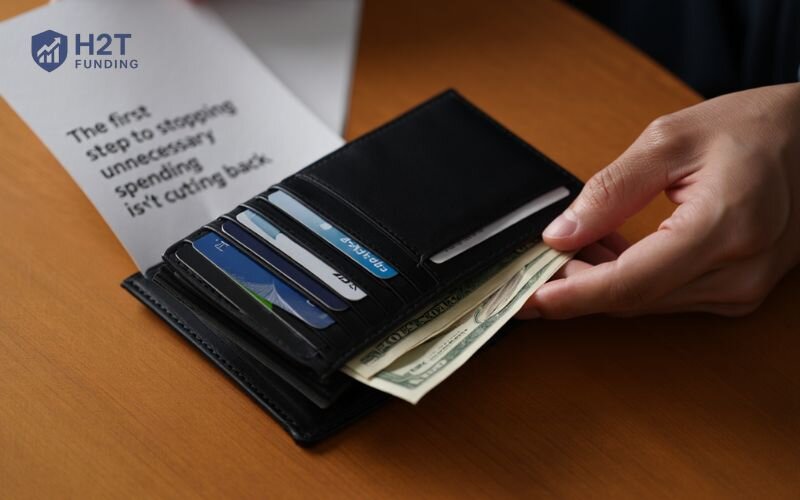
Try this exercise: Open your bank statement from the last 30 days. For every non-essential expense, like takeout, online shopping, or ride-hailing, ask yourself:
- Where was I when I made this purchase?
- How was I feeling at the time? (Bored? Stressed? Lonely? Excited?)
- Was anyone with me or influencing my decision?
- Did this purchase actually solve that feeling, or just distract me from it?
This process helps reveal the psychological reasons for overspending. You might notice patterns, like shopping when you’re tired or stressed. Once you name the trigger, you can start interrupting the cycle.
1.2. Acknowledge the psychology of spending
I often think spending is a financial problem, but it’s just as much a psychological one. Our brains are wired to seek instant gratification. Each time you click “Buy now,” your brain releases dopamine, the chemical that makes you feel good. That’s why a quick purchase can feel like a mood booster, especially after a long, stressful day.
But that high doesn’t last. And when it fades, you’re left with the same emotions and less money.
Social media and limited-time sales only make it harder. Seeing your friends post their new gadgets or outfits can trigger the fear of missing out. And when an ad says, “Only 2 hours left!”, you’re pushed to act before you think.
Understanding these psychological reasons for overspending isn’t about blame. It’s about knowing what you’re up against. And once you’re aware of these triggers, you can start to build better habits that last.
Continue reading: How to stop overspending: 12 actionable strategies
2. How do I train myself to stop spending money: 18 practical strategies
Once I understood my emotional triggers and the psychology behind my spending, I stopped trying to rely on willpower alone. What I needed was a system and clear strategies I could apply every day without overthinking.
Below are the 18 tactics I personally used to break the cycle. Some were surprisingly simple. Others took time to stick. But each one made a real difference.
2.1. Build a simple budget (that you’ll actually stick to)
Creating a budget was the first real shift in how I viewed money. Not just to track expenses, but to give my spending direction. Without a plan, money slipped away faster than I could notice, and I kept wondering why I was always short at the end of the month.
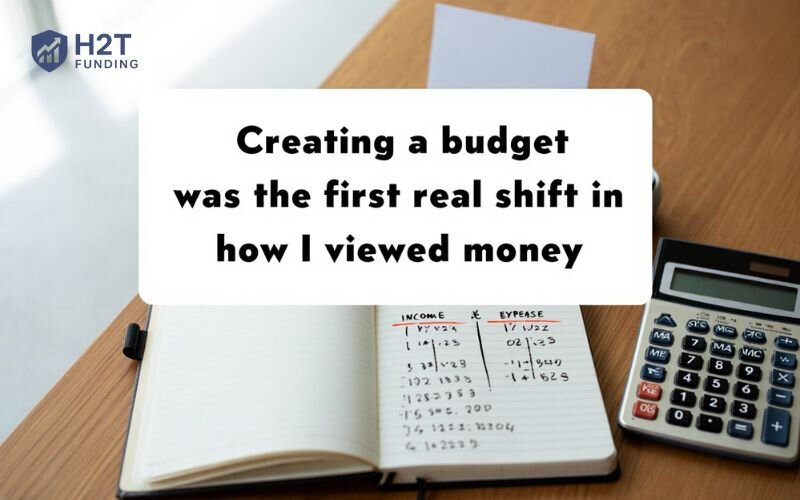
The trick for me was simplicity. I didn’t start with a spreadsheet full of formulas. I grabbed a notebook and wrote three columns:
- Needs (rent, groceries, utilities)
- Wants (eating out, streaming, shopping)
- Savings & debt
Then I used the 50/30/20 rule as a guide. It wasn’t perfect, but it gave me structure and permission to spend within boundaries.
What surprised me most? The moment I saw everything on paper, I stopped feeling anxious. It’s strange, but knowing where my money should go made it easier to say no to things that didn’t fit.
That’s when I realized that budgeting isn’t about restriction; it’s about giving my money a purpose. It became my roadmap for learning how to stop spending money on autopilot and start using it with intention.
2.2. Set motivating money goals
It’s hard to stick to new habits when you don’t know what you’re working toward. That’s why I stopped making vague resolutions like “I need to save more.” Instead, I picked specific goals, ones that sparked real emotion.
I wrote down what I wanted, why I wanted it, and the cost. Then I broke that number into monthly targets. One year, my goal was a solo trip to Japan. Every time I skipped a random online order, I reminded myself: this flight is worth more than another hoodie I don’t need.
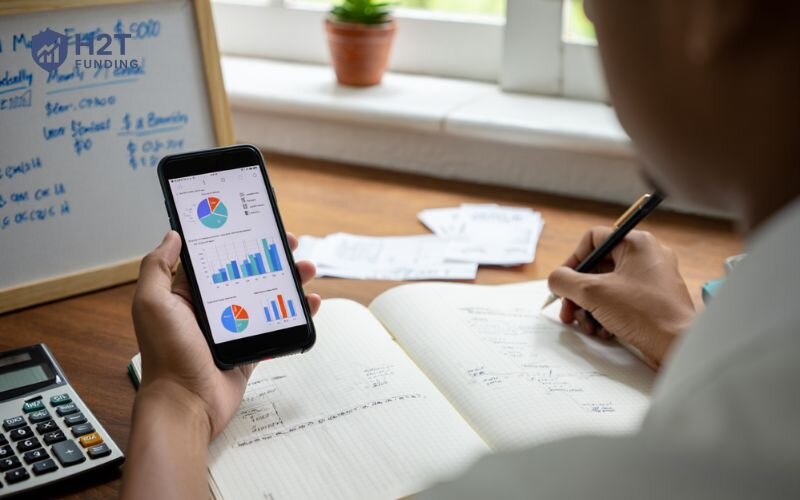
Here’s what helped me stay on track:
- Choose a goal that excites you emotionally, not just logically
- Visualize it: Use a picture, a vision board, or even a sticky note on your wallet
- Break it down: Set monthly or weekly milestones to keep the momentum going
When the “why” is strong enough, the “how” becomes easier to follow.
2.3. Track your spending to see the truth
Before I could fix my money habits, I had to face them. And I’ll be honest, it wasn’t fun at first. But writing down every single expense, no matter how small, opened my eyes.
I carried a small notebook for a month and logged everything: snacks, bus fares, coffee, and random apps. Within two weeks, I found a pattern. I was spending more on “little things” than on essentials. It wasn’t the big purchases that hurt me; it was the slow leak I never saw coming.
Here’s how to start:
- Choose your method: a notes app, a budgeting app, or plain pen and paper
- Be brutally honest, don’t skip any transactions, even if they feel “insignificant”
- Review weekly: Spot patterns and emotional triggers, not just numbers
This one habit transformed how I spent money. Once I saw the truth in black and white, I could no longer pretend I “didn’t know where it all went.” That clarity was a turning point. You can’t change what you don’t acknowledge, and for me, this was the most honest step toward truly taking control of my spending habits for good.
2.4. Plan your meals to cut food costs
I used to waste a shocking amount of money on takeout, simply because I didn’t plan ahead. Every evening became a last-minute decision, and convenience always won over savings.
The turning point came when I started meal planning every Sunday. I’d list five easy meals I could cook with overlapping ingredients, check what I already had, and only buy what I needed. Suddenly, my grocery bills dropped, and so did the urge to order food.

Here’s what worked for me:
- Plan 3–5 simple meals each week
- Build your grocery list from your meal plan
- Include at least one “lazy meal” for busy nights
- Cook extra for leftovers to reduce midweek temptation
This habit alone made a massive difference for me, proving that you can stop spending so much on food without feeling deprived at all.
Don’t miss it: 15 Grocery budget tips for smart shopping
2.5. Always shop with a list
Walking into a store without a list was a guaranteed way for me to overspend. I’d go in for toothpaste and leave with snacks, candles, and three items I “might need later.”
Now, I never shop without a list, whether it’s groceries, clothes, or household items. And I stick to it like it’s a contract with myself.
Here’s what I do:
- Make your list based on what you actually need, not what’s on sale
- Categorize items to avoid aimless wandering (e.g., produce, pantry, frozen)
- Use a note-taking app so your list is always with you
- Set a “buffer limit” (e.g. $10) in case something urgent comes up
Since I started using lists consistently, my impulse buys have dropped by more than half. Since I started using lists consistently, my impulse buys have dropped by more than half. This small habit proves that training yourself to stop spending money doesn’t always require a grand gesture; sometimes, it’s as simple as a piece of paper.
2.6. Use the 24-hour pause rule
One of the quickest ways I learned to stop impulse spending was this simple rule: Wait 24 hours before buying anything non-essential. That one-day gap gave my emotions time to settle, and most of the time, I didn’t even want the item anymore.
I created a “Want List” on my phone. Anytime I saw something tempting, I added it there instead of buying it right away. A day later, I’d ask myself: Do I still care about this? If the answer was no, I deleted it. If the answer was yes, I considered it more carefully.
This rule helped me:
- Avoid emotional purchases
- Spot patterns in what I thought I needed
- Feel more in control of my money
If you struggle with how to stop spending money impulsively, building this pause into your routine is a powerful place to start.
2.7. Try the cash envelope system
I used to think I had self-control until I realized how easy it was to swipe a card without thinking. The cash envelope system changed that for me. Physically seeing the money leave my hand made me think twice.
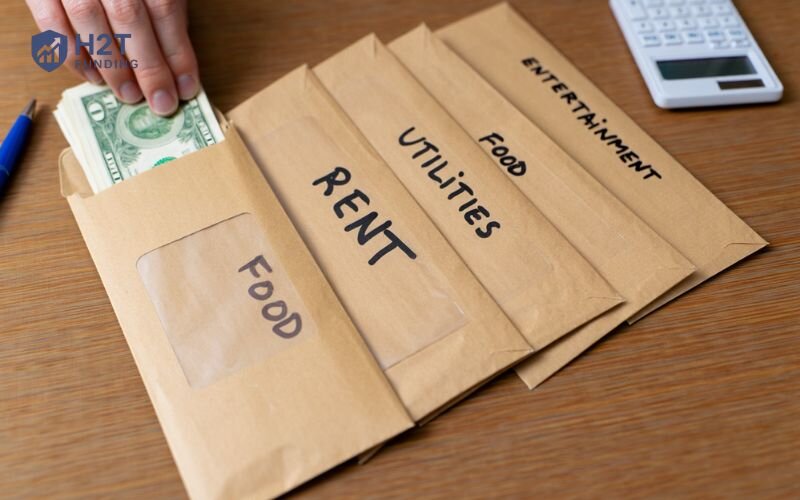
Here’s how I used it:
- I picked 3–4 categories I often overspent on: food, coffee, and entertainment
- I withdrew cash and divided it into labeled envelopes
- Once an envelope was empty, I didn’t refill it until the next month
This method gave me a hard limit without needing constant mental math. It also taught me to prioritize. If I wanted to spend more on dining out, it had to come from somewhere else.
If you’re looking for how to not spend money beyond your budget, this old-school method still works better than any app I’ve tried.
2.8. Find free alternatives to retail therapy
Whenever I felt bored, stressed, or emotionally drained, my first instinct used to be to open a shopping app. It wasn’t about needing anything; I just wanted a quick dopamine hit.
What helped was creating a list of free activities I could do instead. I kept it in my phone and reached for it whenever the urge to spend crept in.
Here are some things that worked for me:
- Go for a walk in the park or around the block
- Call or text someone I haven’t spoken to in a while
- Listen to a podcast that makes me think or laugh
- Rearrange or clean a small part of my room
- Write down three things I’m grateful for
Over time, this list became my toolkit. If you’re trying to stop spending money on unnecessary things, finding healthy, free replacements is key to breaking the habit without feeling deprived.
2.9. Use what you already have
One of the most surprising ways I saved money? Simply look around before buying something new. I used to buy duplicates, stationery, skincare, and even pantry items, just because I forgot I already had them.
Now, I make it a rule: before buying, I check what I already own and ask, Can this do the job?
Here’s what helped me stay intentional:
- Organize items by category so I can see everything at a glance
- Rotate clothes and accessories, and I rediscovered old favorites
- Challenge myself to finish one product before opening another
This habit didn’t just save money; it made me more aware of how much I already have. If you’re learning how to train yourself to stop spending money, start with your own shelves. You might be surprised at how little you actually need to buy.
2.10. Find an accountability partner
I used to think managing money was a private matter. But when I kept slipping into the same spending habits, I realized: I needed someone to check in with, someone to remind me of what I said I wanted.
That’s when I asked a close friend to be my money accountability partner. We set small weekly goals, like “no online shopping” or “bring lunch from home,” and we’d report back every Sunday. The impact was immediate: I hesitated more, thought longer, and spent less.
Here’s how to make it work:
- Pick someone you trust and who shares similar goals
- Be specific about what you’re tracking together
- Focus on support, not shame
Seriously, if you’re asking yourself, “How do I train myself to stop spending money?”, don’t underestimate this step. Having someone in your corner makes the process feel more real and a lot less lonely.
2.11. Take on a “no-spend” challenge
When I felt stuck in a spending spiral, I didn’t need another rule; I needed a reset. That’s when I tried a no-spend challenge. It was uncomfortable at first, but it taught me more about my habits than any budgeting app ever did.
I started with a 7-day challenge: no non-essential spending. I allowed groceries and bills but skipped coffee runs, impulse buys, and online carts. Instead of focusing on what I couldn’t buy, I focused on what I could do differently.
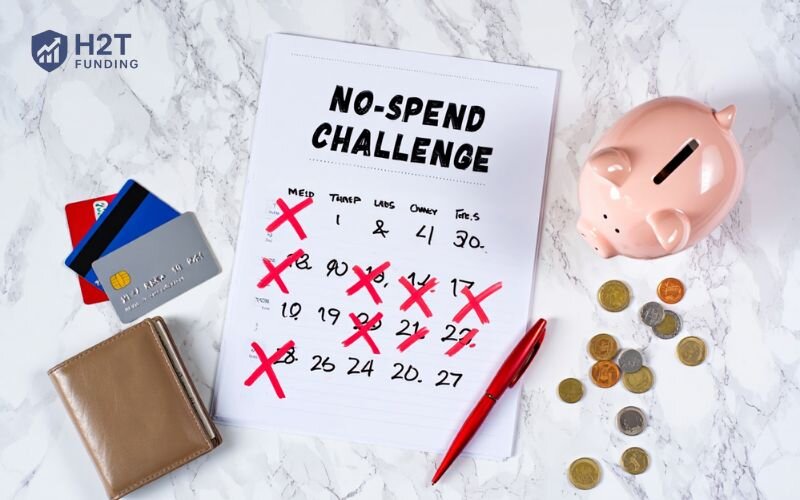
To make it effective:
- Choose a realistic time frame (start with 3–7 days)
- Define what “no-spend” means for you, be clear
- Reflect daily on how you feel and what you learn
This challenge was the mental reset I desperately needed. It’s one of the fastest ways to break the autopilot cycle and reconnect with your intentions, making it a surprisingly powerful step toward long-term financial control.
2.12. Unsubscribe from temptation
It’s easy to think you’re in control until your inbox fills with “limited time offers” or your phone lights up with another 50% off push notification. I used to fall into that trap constantly.
So I cleared the noise. I unsubscribed from every promo email, turned off all shopping app alerts, and unfollowed influencers who made me want more, not need more. That small digital detox helped me regain mental clarity around what I actually value.
If you’re constantly triggered, try this:
- Use email tools to unsubscribe in bulk
- Mute shopping apps or move them to a hidden folder
- Curate your social feed: unfollow, filter, clean up
Less temptation doesn’t just mean fewer purchases; it means more intentional decisions. And that’s a habit worth building.
2.13. Automate your savings to “pay yourself first”
Waiting until the end of the month to save is like hoping there’ll be leftovers at a party; you usually end up with crumbs. I used to think I’d be disciplined enough to set money aside manually, but it rarely worked.
The shift came when I automated it. Every payday, a fixed amount goes straight into a separate savings account, before I even see it. I don’t have to think about it, and that’s what makes it powerful.
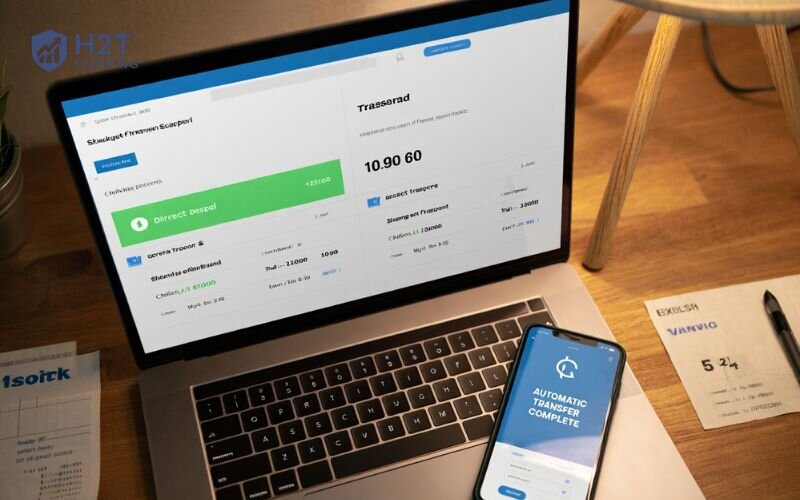
Here’s what pay yourself first strategies helped me:
- Set up an automatic transfer right after you get paid
- Choose a savings account you don’t touch regularly
- Start small, just enough to build the habit
Saving shouldn’t depend on willpower. When it happens automatically, it becomes effortless and sustainable.
2.14. Leave your credit cards at home
I didn’t think much of swiping my credit card until I looked at my statement and realized I was spending far more than I remembered. It didn’t feel like “real” money, and that’s the danger.
So, I gave myself a simple rule: If I’m going out, I only bring a set amount of cash or my debit card with limited funds. The result? I became far more intentional with every purchase because I could physically see the limit.
Why this works:
- Credit cards delay the pain of paying; cash doesn’t
- Having a cap forces better decisions at the moment
- You can’t overspend what you don’t have with you
Sometimes, just making it harder to spend is enough to stop the habit before it starts.
2.15. Calculate an item’s cost in work hours
I’ll never forget the moment I looked at a pair of sneakers and thought, “It’s only $80.” But when I forced myself to calculate how many hours I had to work to earn that money, it didn’t feel so casual anymore.
This mental trick changed how I see prices. Now, before buying anything, I ask: How many hours of my time is this really worth?
Here’s how you can do it:
- Take your hourly income (after tax)
- Divide the price of the item by that rate
- Ask if it’s worth that chunk of your life
This one mindset shift helped me cut out so many impulse purchases. When I viewed money as time, not just numbers, everything felt more personal and more valuable.
2.16. Practice gratitude for what you already own
There was a time I constantly felt like I didn’t have enough, more clothes, a better phone, or a newer laptop. Then one weekend, I decided to clean out my closet. I found things I hadn’t worn in months… some, not even once.
That was my turning point. I started making a habit of noticing what I already had and appreciating it. Every night, I wrote down three things I was grateful for, especially material things I had once wanted badly.
Simple ways to practice this:
- Rotate and reuse items you already own (especially clothes, gadgets)
- Keep a “gratitude for what I have” journal
- Revisit old purchases and remind yourself why you bought them
When you’re focused on abundance, the urge to buy something new starts to fade. It’s not about having more; it’s about seeing enough in what’s already yours.
2.17. Identify and avoid your trigger environments
I used to wonder why I always overspent on weekends until I realized my environment was setting me up to fail. Malls, cafés next to boutiques, and even certain apps on my phone, all triggered the same automatic spending loop.
I started mapping my triggers: Where was I? Who was I with? What time of day? Once I recognized the patterns, I made small adjustments, choosing different routes, avoiding certain websites, and planning activities that didn’t involve shopping.
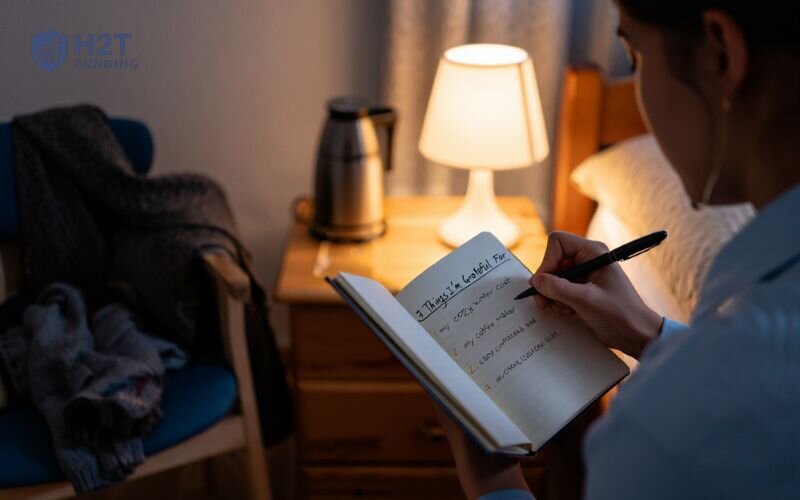
To identify your own:
- Track where and when most unnecessary purchases happen
- Pay attention to emotional states (boredom, stress, celebration)
- Replace high-risk environments with low-cost alternatives
Avoiding triggers isn’t about hiding; it’s about creating conditions that support better choices. When the environment changes, so do the habits.
2.18. Learn the difference between being frugal and being cheap
Early on, I confused frugality with deprivation. I skipped outings with friends, bought the lowest-quality items just to save a few bucks, and constantly felt guilty about spending, even when it was necessary. Eventually, it backfired. I felt isolated and burned out.
Frugality isn’t about refusing to spend; it’s about spending with purpose. A frugal person chooses value over price, quality over quantity, and long-term gain over short-term savings. Being cheap, on the other hand, often leads to poor decisions that cost more down the line.

How to tell the difference:
- Frugal: waits for the right time to buy something of quality
- Cheap: avoids spending even when it’s necessary
- Frugal: brings lunch to save for travel
- Cheap: skips meals to avoid spending altogether
When I stopped being cheap and started being intentional, my entire relationship with money changed. It became a tool, not a source of stress. That mindset shift was one of the most important lessons in my journey to build lasting financial wellness.
See more useful articles: How to create an optimal budget to buy a house by 30
3. FAQs
Whenever something caught my eye online, I used to buy it within minutes, telling myself it was “just a little treat.” That’s when I started applying a simple two-question pause: Do I truly need this, or do I just want it right now? What will actually happen if I don’t buy it today? Most of the time, the answer was: absolutely nothing. The craving passed. Creating even a short pause helped me shift from impulse to intention. You don’t need iron discipline, just a habit of stopping long enough to think clearly.
Compulsive spending usually masks deeper emotions like anxiety or loneliness. Pause before buying and check if you’re Hungry, Angry, Lonely, or Tired (HALT). If yes, meet that need first, and the urge to spend often passes.
ADHD makes impulsive spending harder to manage due to low dopamine and poor impulse control. Try automating savings, using cash-only systems, and deleting shopping apps to reduce friction. Structure works better than willpower.
You don’t need to match everyone’s spending to belong. I learned to set boundaries by being honest. “I’m focusing on saving right now” is enough. Suggest lower-cost alternatives or opt out politely. True friends won’t measure your worth by your wallet.
4. Conclusion
Learning how do I train myself to stop spending money isn’t about cutting everything out or living in deprivation. It’s about building awareness, choosing your habits carefully, and staying consistent, especially when it’s hard.
You’ll have days where you slip up, I certainly did. That’s not failure; it’s part of the process. What matters is the commitment to get back on track. The real victory isn’t perfection, but the powerful feeling of taking back control, one thoughtful decision at a time.
When you’re ready to take your next step, explore the full range of strategies with Budgeting Strategies curated by H2T Funding. You’ve already started the most important part of the journey just by being here.

